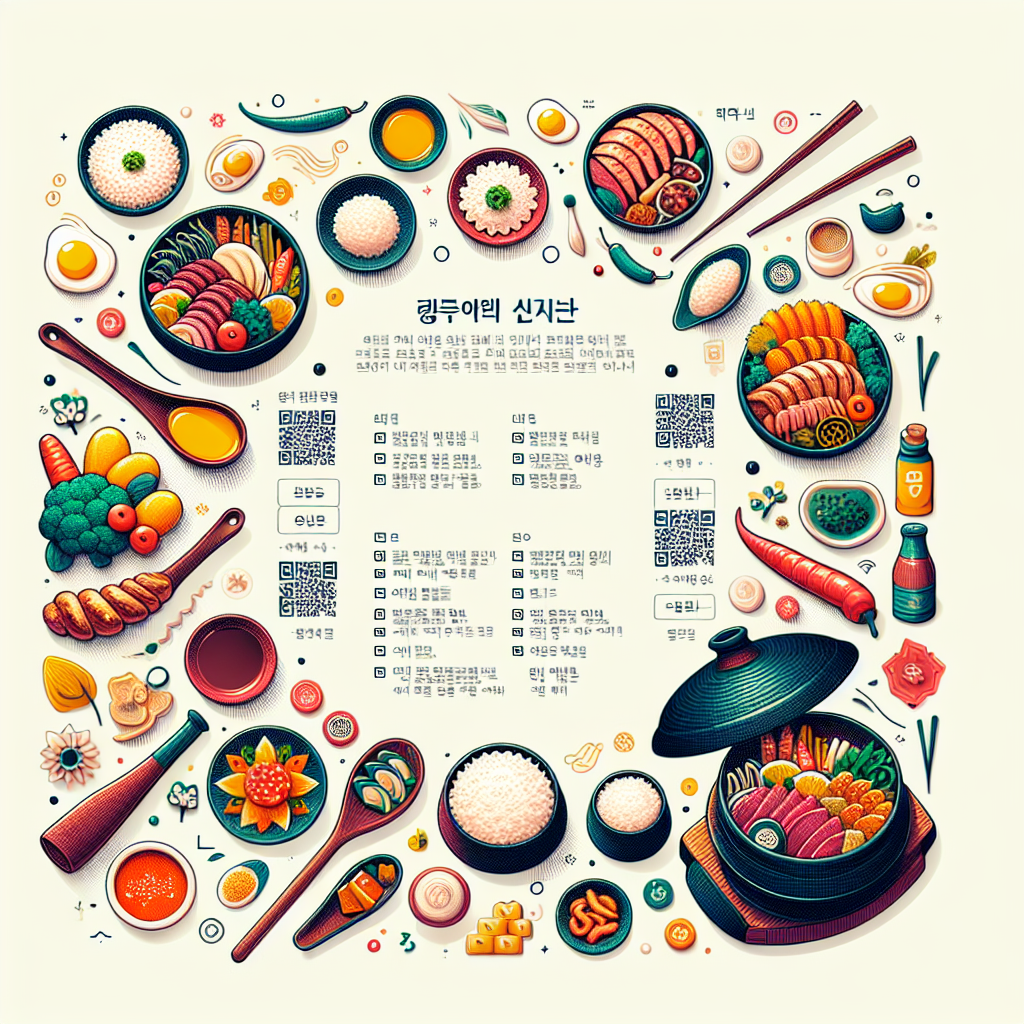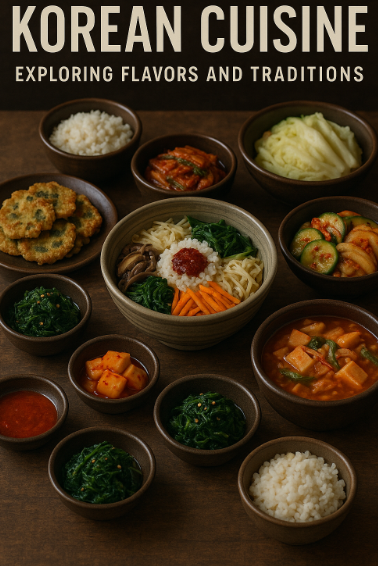**Understanding the Fascinating World of Korean Cuisine: A Culinary Voyage**
Korean cuisine, known for its harmonious blend of flavors and vibrant presentation, offers a unique culinary adventure. This exploration will dive into the rich tapestry of Korean food, highlighting its history, essential dishes, and modern influences.
**A Brief History of Korean Cuisine**
Korean cuisine has evolved over centuries, shaped by Korea’s vibrant history and cultural exchanges. Traditional dishes often emphasize balance and nutritional value, incorporating elements of yin and yang. Rice has been a staple, representing harmony in the Korean diet, usually accompanied by various side dishes known as “banchan.”
Korean royal court cuisine, with its intricate techniques and presentation, has significantly influenced modern Korean dishes. The philosophy of using seasonal ingredients speaks volumes about Korea’s rich agricultural tradition and reverence for natural cycles.
**Essentials of Korean Cuisine: Must-Try Dishes**
1. **Kimchi**: Known globally, kimchi is a fermented vegetable dish, most commonly made with napa cabbage and Korean radishes, seasoned with chili powder, garlic, and ginger. It’s not only a staple side dish but also a symbol of Korean culture.
2. **Bulgogi**: This marinated beef barbecue represents the sweet and savory palate of Korean cooking. Thinly sliced beef is marinated in soy sauce, sugar, sesame oil, and garlic before being grilled or stir-fried to perfection.
3. **Bibimbap**: A vibrant mixed rice dish usually topped with a variety of vegetables, egg, and chili pepper paste. It embodies the essence of balance—textures, colors, and flavors come together in one nutritious bowl.
4. **Tteokbokki**: Iconic Korean street food made from soft rice cakes simmered in a sweet and spicy sauce. It reflects Korea’s penchant for comforting, bold flavors, and is a popular snack among locals and visitors alike.
**The Modern Evolution of Korean Cuisine**
Korean cuisine has dynamically evolved, influenced by globalization and fusion with other cuisines. Korean food now resonates in international contexts through popular fusion foods like Korean tacos and kimchi burgers. Additionally, the incorporation of Western techniques and ingredients has expanded the culinary boundaries of traditional Korean dishes.
The global popularity of K-pop and Korean dramas has also ignited interest in Korean food, making it a staple in cities worldwide. The culinary world has embraced Korean flavors, leading to an increased demand for ingredients like gochujang (Korean chili paste) and doenjang (fermented soybean paste).
**Nutritional Aspects of Korean Food**
Table of Korean Ingredients & Nutritional Benefits:
| Ingredient | Nutritional Benefit | Use in Cuisine |
|—————|————————————|—————————|
| Kimchi | Probiotics and Antioxidants | Side dish, soups, stews |
| Gochujang | Vitamins A, B, and C | Marinades, stews, sauces |
| Seaweed | High in iodine and calcium | Soups, sushi, banchan |
| Soybean Paste | Protein and amino acids | Stews, dips |
| Rice | Source of carbohydrates and fiber | Main dish, complements |
Korean dishes often focus on health, utilizing fermentation for probiotics and adopting preparation methods that preserve natural nutrients. The emphasis on vegetables and lean proteins supports a balanced diet.
**Traditional Korean Dining Etiquette**
Korean dining goes beyond food; it’s an immersive cultural experience. Etiquette such as pouring drinks for others, using two hands when receiving items, and showing respect to elders at the table is observed. These customs underscore the societal value placed on respect and community.
**FAQ**
– **What is the significance of banchan in Korean meals?**
Banchan are small side dishes served along with cooked rice, enhancing the meal with a variety of flavors and textures. They reflect the cultural importance of shared meals and communal dining.
– **Is Korean cuisine suitable for vegetarians?**
Yes, Korean cuisine offers many vegetarian-friendly options like kimchi, bibimbap (without meat), and a variety of vegetable banchan. However, it’s important to confirm ingredients used as some may contain seafood-based seasonings.
– **Why is fermentation prominent in Korean cooking?**
Fermentation enhances flavors and acts as a preservation method. It also provides health benefits, improving digestion and offering probiotics.
**Conclusion**
✅ Korean cuisine is a rich tapestry of flavors, deeply rooted in history and cultural traditions.
✅ Signature dishes like kimchi, bulgogi, and bibimbap highlight Korea’s culinary diversity.
✅ Korean food continues to evolve with global influences while maintaining its core values of balance and nutrition.
#KoreanCuisine #Kimchi #Bulgogi #Bibimbap #Tteokbokki #KoreanFood #FoodHistory #KoreanCulture #AsianCuisine #Kpop #KDramaInfluence #HealthyEating #Fermentation #Banchan #Gochujang #Doenjang #FusionCuisine #StreetFood #DiningEtiquette #CulinaryTraditions #KoreanIngredients #CookingAtHome #GlobalCuisines #KoreanFusion #KoreanDining #RiceDishes #Foodie #KoreanTraditions #SeoulFood #KoreaTravel #KoreanRecipes

